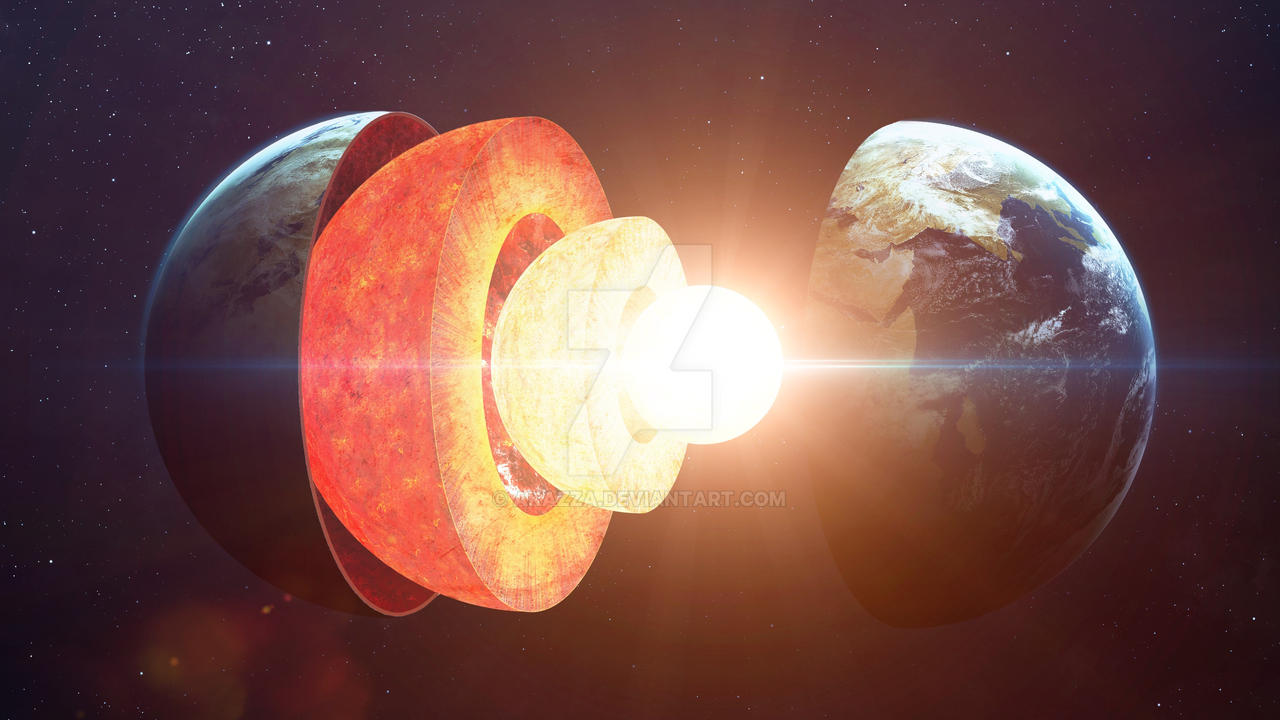Recent studies have unveiled a captivating development concerning our planet's core-its rotation is slowing down. According to research published in the prestigious journal Nature, Earth's inner core began decelerating its rotation around 2010. This phenomenon could subtly alter the length of a day by fractions of a second. Such a discovery holds significant implications for our comprehension of Earth's internal dynamics and the intricate processes that govern its behavior.

To grasp the significance of this finding, it's essential to understand the structure of Earth's interior:
Crust: The outermost solid shell of our planet, upon which we live.
Mantle: A thick layer of hot, solid rock that surrounds the core.
Outer Core: A layer of molten iron and nickel that surrounds the inner core.
Inner Core: A solid ball of iron and nickel, approximately 1,220 km in radius.
The inner core "floats" in the liquid outer core, allowing it to rotate independently of the Earth's surface. This unique arrangement is crucial for understanding the recent findings.
Scientists have employed various methods to study the inner core's behavior, including analyzing seismic waves generated by earthquakes and nuclear tests. These waves travel through the Earth's interior, and by measuring their speed and interaction with the different layers, researchers can estimate the position and movement of the inner core.
The study that revealed the inner core's slowdown analyzed seismic data recorded during 121 repeating earthquakes around the South Sandwich Islands between 1991 and 2023, as well as data from several nuclear tests worldwide. By comparing the seismic data from different points in time, the researchers detected subtle changes in the inner core's behavior.
The inner core's slowdown is likely caused by the complex interplay of gravitational and magnetic forces acting on it, as well as the convection within the liquid outer core that sustains Earth's magnetic field. The Earth's inner core is influenced by gravitational interactions with the mantle and the dynamics of the outer core, which are driven by the heat from the crystallizing inner core and the cooling of the outer core.
The findings have several implications for our understanding of Earth's dynamics:
Day Length: The inner core's slowdown is minuscule but measurable, altering the length of a day by fractions of a second.
Magnetic Field: The behavior of the inner core is integral to sustaining Earth's magnetic field, which protects the planet from solar radiation and cosmic rays.
Geological Insights: Understanding the inner core's dynamics may provide insights into the Earth's history and the processes that have shaped its structure.
While the change in the length of a day caused by the inner core's slowdown is minor, it highlights the dynamic nature of our planet's interior. Continuous recording and study of seismic data over many years are necessary to answer the questions raised by this discovery. Future research may focus on:
Long-term Monitoring: Establishing a network of seismic stations to monitor changes in the inner core's rotation over extended periods.
Advanced Modeling: Developing more sophisticated models to simulate the interactions between the inner core, outer core, and mantle.
Magnetic Field Studies: Investigating how changes in the inner core affect the Earth's magnetic field and its long-term stability.
This revelation is part of a broader effort to understand the Earth's internal processes. Similar studies have uncovered other fascinating aspects of our planet's behavior, such as the dynamics of tectonic plates, the movement of the mantle, and the behavior of the outer core. Together, these studies paint a complex picture of a planet that is far more dynamic and interconnected than previously thought.
In conclusion, the revelation that Earth's inner core is slowing down is a fascinating development in our understanding of our planet's inner workings. As we continue to explore the depths of our world, we may uncover even more secrets hidden within the Earth's core, shedding light on the intricate mechanisms that drive our planet's evolution and behavior.